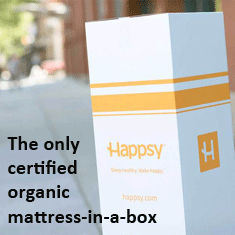
Water | Swimming Pools
Down proofing on down comforters
Question from KJ
I just realized something and wanted to share. I purchased down comforters that have down proofing and is “dry clean only.”
I washed it anyway a few times (before 1st use, and a few times after my daughter’s accident), and the down feathers started to come out a little. I do not mind that, but it seems like the down proofing is something that comes off after washing, i.e. chemical that is applied.
When I googled “down proofing”, it sure enough returned some chemical compound that is sprayed, typically something you purchase to apply to your down jacket, etc.
Anyway, I wanted to caution others who may be considering purchasing down comforters.
By the way, I have older down comforters which are dry clean only, and I have washed them numerous times, and you really do you lose a lot of feathers. If that actually eliminates the checmicals (which I do not know), then washing is really worth it.
Debra’s Answer
Making Drapery
Question from Mary
I’m making drapes for my bedroom and am trouble deciding on an appropriate lining fabric. I’m considering organic barier cloth, but that seems expensive choice, and I’m not sure it would hold up in the sun or how it will lay.
Debra’s Answer
Sugar Cane
Question from Terri Williams
Hi Debra:
I just bought a sugar cane stick. How in the world do you get the sugar cane out of this huge stick? I have not a clue!
Terri
Debra’s Answer
The first step in making sugar from sugar cane is to remove the juice from the fiber. This requires a press. These costs hundreds and thousands of dollars. I think in Thailand they have hand presses for sugar cane, but I have been unable to locate one. A local restaurant here in Florida has an electric press that they use to extract the juice from sugar cane in the bar to use in tropical alcoholic drinks and lemonade (and you can order a shot of sugar cane juice to put in your ice tea). It requires a lot of pressure to extract the juice.
The best way to use sugar cane at home is to just cut off a bite-sized chunk and chew on it. It gives a slow release of sweetness, like chewing gum.
But I haven’t come up with a way yet to utilize sugar cane in any other way.
Colored zippers
Question from Lisa
Dear Debra,
Many zippers on clothing seem to be colored to match the fabric, and also seem to be made from plastic material instead of metal.
I can still find some metal zippers on clothing, but less and less it seems.
Is there any issue with the colored zippers made from plastic looking material? Is the color from paint? It seems to wear off and chip over time.
Is there a health concern?
Thanks.
Debra’s Answer
Without actually seeing the zipper, I would say this is probably not much of a health hazard. It might cause some skin irritation if it came in contact with your skin.
My advice would be to focus on the BIG health hazards like pesticide exposure and water pollutants rather than these little bits of plastic.
While answering your questions, I just noticed that I don’t have any clothing with zippers. My pants have elastic or drawstrings and I either wear tank tops that pull over my head or shirts that button. I haven’t even physically looked at a zipper in years.
Cleaning the Patio of Pet excriments
Question from Michelle Huff
Hi there! My family and I (husband, step-son (13), daughter (4), and son (1)) adopted a new puppy last week. He is a fabulous dog and your book Home Safe Home has been wonderful for our family since I received it as an early Christmas Gift.
I do however have a question. Our puppy is currently 9 weeks old and of course we are in the process of potty training. After seeing the vet a few days ago he recommended that we quarintine him inside of the apartment for the next few weeks (until he has had his complete round of parvo vaccines) in order to reduce his risk of contracting the disease. With this new ‘no going outside rule’ we are having to allow him out onto our patio to do his business.
Of course since we’re still in the beginning stages of potty training we have not been able to get him to successfully go on the puppy pad just yet, which results in him basically excrimenting just about anywhere on the patio.
My question is to you is how can I clean and disinfect my patio concrete after he goes without causing harm to him or my children. You see currently I had to go out and scrubbed the patio with some chlorine bleach (I know OMG!) and water but now I can’t let any of them outside because I don’t want them playing in it or drinking it. Can you help me?
Debra’s Answer
There are natural stain and odor remover products for dogs, but they don’t disinfect.
For the disinfecting, I would look to borax, which is used to wash baby diapers, or vinegar and hydrogen peroxide (spray with one then spray with the other), which has been proven to disinfect countertops.
If the area is in the sun, the heat of the sun will disinfect, but the sun is pretty weak this time of year.
Readers, any suggestions?
Sugar Replacements???
Question from MLS
We are in the process of trying to switch all of our refined sugar over to more ‘natural’ sugars (we are a family that just loves sweets… and aren’t ready to give them up, yet).
Is there a difference in taste between the ‘sucanat’ and the ‘rapadura’ or a difference in how you would substitute them in a recipe? They look the same on the shelf. Also, as the grains get lighter (and/or bigger), are they more refined? It is a little confusing when looking on the shelf – there are SO many ‘organic’ varieties. As far as the best substitute in ‘taste’ to white sugar, what do people recommend, as far as the least refined?
Also, you listed ‘organic powdered sugar’ in the unrefined category on your explanation of cane sugars, but is there a particular brand that is ACTUALLY unrefined, and not just powdered sugar as we know it listed as ‘organic’?
We’ve done a little baking/cooking with the agave nectar, and will still experiment around with that, but it would be nice in the meantime to find some ‘close’ subs to use in our regular recipies that don’t take too much altering, and still give a good flavor (I don’t want EVERYTHING tasting like molasses).
Thanks for any recommendations from other ‘sweet’ lovers!!
Debra’s Answer
The closest replacement to ordinary sugar is unrefined cane sugar (such as Sucanat or Rapadura) for brown sugar and “organic” powdered sugar for white sugar.
The organic powdered sugar is unrefined and taste like white sugar. However, it contains a small amount of corn starch, so it is not suitable for people with corn allergies.
I find that agave is a really good substitute for white sugar. It’s sweet and has a clean taste that has no other flavor.
There is no difference I can tell between Sucanat and Rapadura. You can use them both the same way.
About the granulated sugars, see Sweet Savvey: Unrefined Cane Sugar for a breakdown of all the different types of sugar that come from sugar cane.
Looking for Shampoo for Dog Dander
Question from Sandy
I am looking for a shampoo I can use on my dog which is chemical free. I have MCS and have now become allergic to my dog. I DO NOT want to have to give her up as it would break my heart! If anyone knows of any shampoos to reduce pet dander that would be safe for me, please post!
Thank you, Sandy
Debra’s Answer
Readers?
More Good Stuff About Stevia
After sending out last week’s email about new stevia products and it’s upcoming use as a sweetener in food products, I received some emails asking where you can buy whole stevia leaf.
If you can’t find it at your local natural food store, you can buy organic dried stevia leaf from Mountain Rose Herbs. Just type “stevia” in their onsite search engine and you will find whole leaf, powdered leaf, and many tea blends that contain the whole leaf.
There are many human health benefits of drinking tea made from stevia, including:
- has 5x the antioxidants of green tea (and no caffeine)
- enhances immunity and natural healing power
- kills food poisoning bacteria but does not harm useful intestinal bacteria
- kills viruses
- detoxifies chemicals
- prevents allergies
- anti-oxidizing effect
- detoxifies histamine
- digestive aid
- regulates blood sugar in people with diabetes
- inhibits the growth and reproduction of oral bacteria
- lowers incidence of colds and flu
- reduces the craving for sweets
Fresh stevia leaves contain Vitamin C, calcium, beta-carotene, chromium, fiber, iron, magnesium, niacin, potassium, protein and silicon.
If you want to grow your own stevia in your garden, it does best in an environment that is hot, humid, and wet. My stevia plants grow all year here in Florida. Mountain Rose Herbs also sells seeds.
Once you have your fresh or dried stevia leaves, you can use them to make hot or iced tea, and to make a stevia concentrate, which you can use as a liquid sweetener. There are several ways to make this.
To make tea: add 3 teaspoons stevia leaf (2 teabags) to one quart (4 cups) water. If using room temperature water, steep 4 hours. If using hot water, steep a few minutes, until desire taste. Or use room temperature water and place it in the sun to brew for 2 hours. Add mint, ginger, lemon, or any other herbs you like.
To make Homemade Liquid Stevia Concentrate: Place 1 cup warm water in a glass jar and add 1/4 cup stevia leaf powder. Let sit 24 to 48 hours. Repeat until the liquid reaches your desired sweetness. Strain through cheesecloth. Keep refrigerated. Put some in a small dropper bottle for ease of use.






